Catalonian media reflect polarised Spanish society
- Published
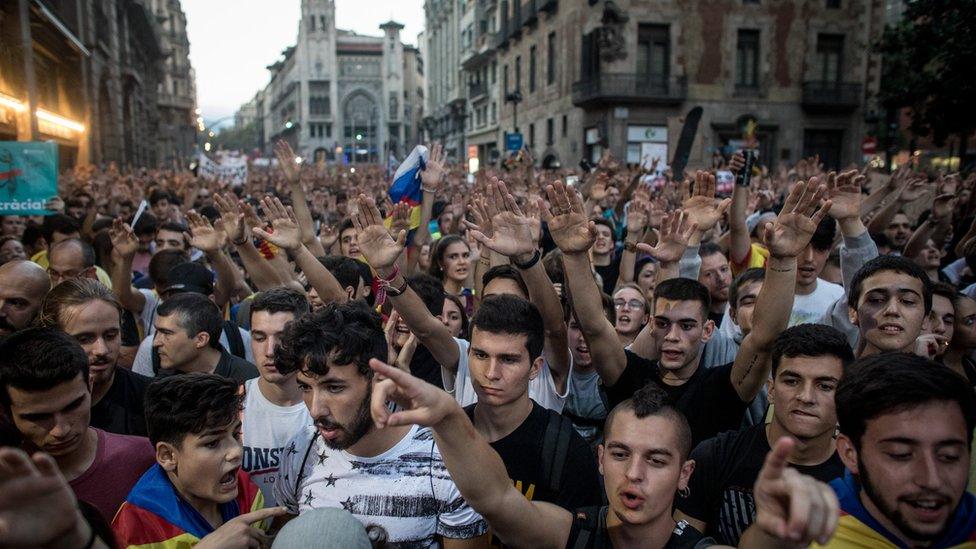
Thousands protested in Barcelona against police action during the referendum
The front page of Barcelona's La Vanguardia newspaper on 4 October was dominated by the ongoing Catalan crisis.
An aerial photograph showed tens of thousands of people demonstrating in the city centre the previous day, when a region-wide strike had been staged in protest at attempts by Spanish security forces to stop people voting in Sunday's independence referendum.
The article below the photograph underlined how successful the strike had been.
In Madrid, meanwhile, Catalonia was also hogging the headlines but a different version of events was being presented.
El País' front-page photograph of the strike was of two dozen youths running on to a road to stop a car, suggesting chaos rather than organised protest.
"The Catalan government takes its insurrection on to the streets on a day of disorder," read a headline above it.
Such contrasting interpretations of what is happening in Catalonia reflect the deeply divisive nature of Spain's territorial crisis and the media has been a key factor in fuelling the polarisation.

Newspaper headlines across Spain are dominated by the Catalonia crisis
Newspapers, radio and television have been mobilised on both sides.
Two media outlets which have particularly opposing approaches to the situation are Spanish public broadcaster TVE - which is part of Radio Televisión Española - and Catalan public broadcaster TV3.
On referendum day on 1 October, TV3 repeatedly showed footage of Spanish national police and civil guards charging into polling stations, beating voters and dragging them away before seizing ballot boxes.
One elderly woman was shown bleeding from the head after a baton charge, and another woman was shown being dragged by her hair along the floor of a voting station by a masked riot policeman.
Those images, and accounts by many of the hundreds people who have been hurt, were repeatedly broadcast in the days that followed.
TVE, meanwhile, showed very little of the violence, or indeed the referendum itself, which the Spanish government insists was illegal.

Many have also taken to the streets in support of the Spanish government and police
Instead, news anchor Pedro Carreño told viewers there had been "pushes" and "moments of tension", suggesting that responsibility for any violence had been shared.
The coverage by the national broadcaster drew outrage from some of its staff in Catalonia. They issued a statement to denounce the editorial line of their employer, whose senior appointments are heavily influenced by the Spanish government.
"The portrayal of a skewed version of reality has given a ridiculous and grotesque image [of the broadcaster]," they wrote, "instead of guaranteeing the fundamental right of honest and plural information, which is the obligation of TVE."
Staff complained that the channel had censored journalists in the Catalan coverage to manipulate the final news content.

More on the Catalan crisis

"All the private TV channels were showing what was happening that day from early in the morning," says Rafael González a Madrid-based freelance TV journalist. "But TVE barely covered it."
Yet the criticism cuts both ways. Catalan station TV3 is funded by the nationalist regional government, a fact that many believe sways its content.
That might mean the TV weather map sometimes includes the Catalan-speaking territories of the Balearic Islands and Valencia, both historically claimed by nationalists. Or in the case of news coverage, it means delivering information that supports the drive for independence.
In recent days, TV3 has been accused of indoctrination after airing a children's programme explaining the referendum as if it were an adventure film.
"For days, they were one of the most prized treasures in the world," says the narrator, of the ballot boxes that were smuggled into many polling stations.
"So on Sunday morning, when everything was ready and polling stations were opened, lots of people celebrated and even cried," the programme continued.
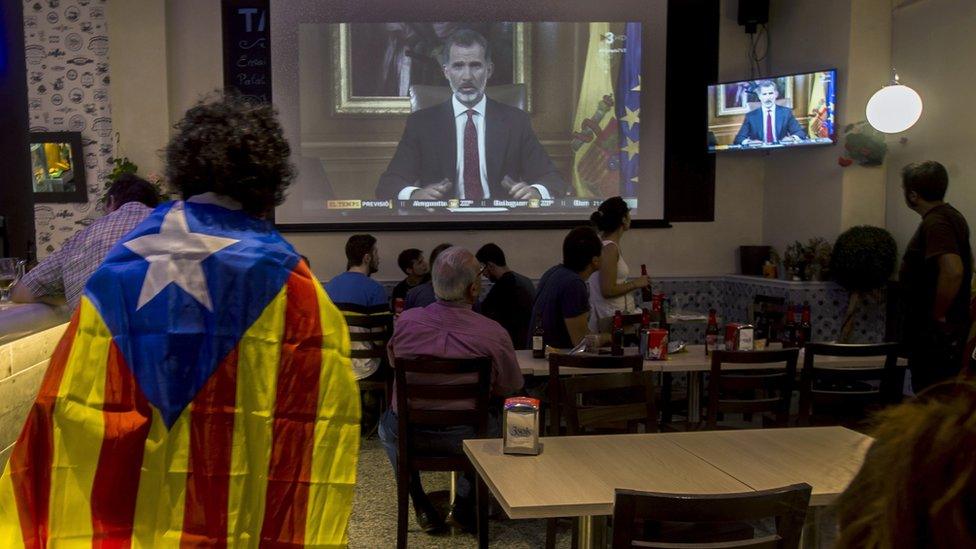
King Felipe, in a rare televised address, admonished Catalan leaders
Bernardo Díaz Nosty, who teaches journalism at Málaga University, says both TVE and TV3 fall short of basic public broadcasting duties, but in different ways.
"TV3 feeds a certain ideological position," he says. "But TVE tries to play down big issues and focus on more trivial stories. That's another way of intervening - denying the importance of issues that are of public interest."
Televised speeches made by King Felipe on Tuesday and then Catalan President Carles Puigdemont 24 hours later echoed the editorial divide that has opened up.
The king admonished the Catalan government, apparently siding with Madrid, while Mr Puigdemont rebuked the monarch but suggested he was willing to engage in talks.
The next day, pro-independence newspaper Ara carried the headline: "Puigdemont criticises the king and seeks external mediation"; while the conservative Madrid-based daily El Mundo ran: "The cynicism of Puigdemont: invoking the constitution to attack the king."
Oriol Bartomeus, a political scientist at Barcelona's Autònoma University, believes the editorial battle over Catalonia is particularly fierce, however he sees a broader trend.
"One of the big problems that we have here, in the UK, in the United States and all over Europe is that people increasingly receive information only from media that reinforce their existing ideas," he says.
Pro-independence Catalans might watch TVE, he says, but only to confirm their opinions about how skewed it is; and a Spanish nationalist might watch TV3 for the same reason.
"The problem is in the middle, people who are on neither one side nor the other," Mr Bartomeus says. "They are being left without any media."
- Published26 March 2018
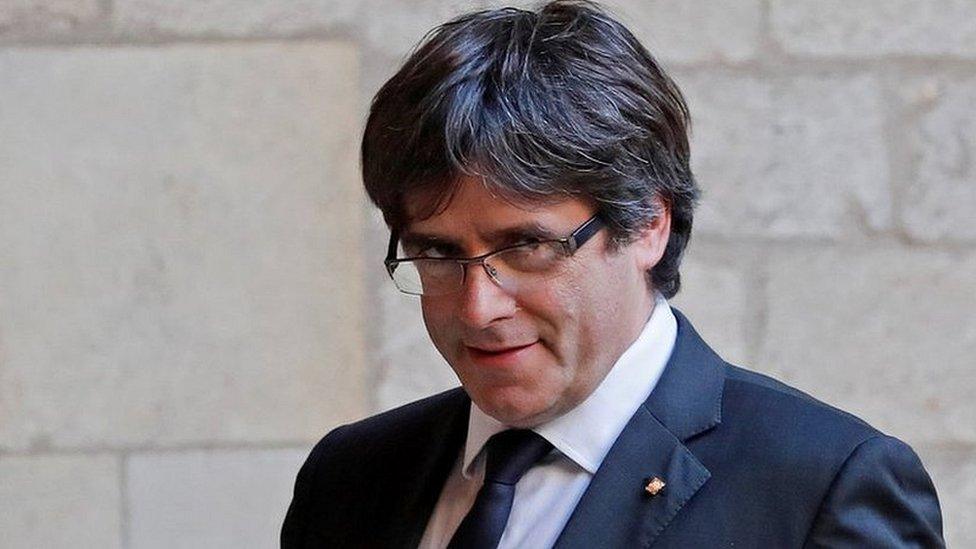
- Published3 October 2017
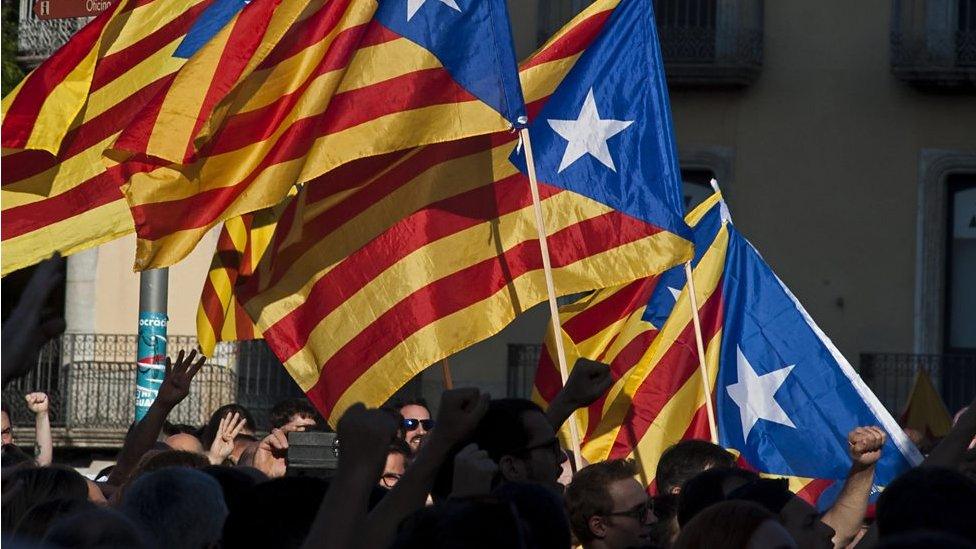
- Published4 October 2017
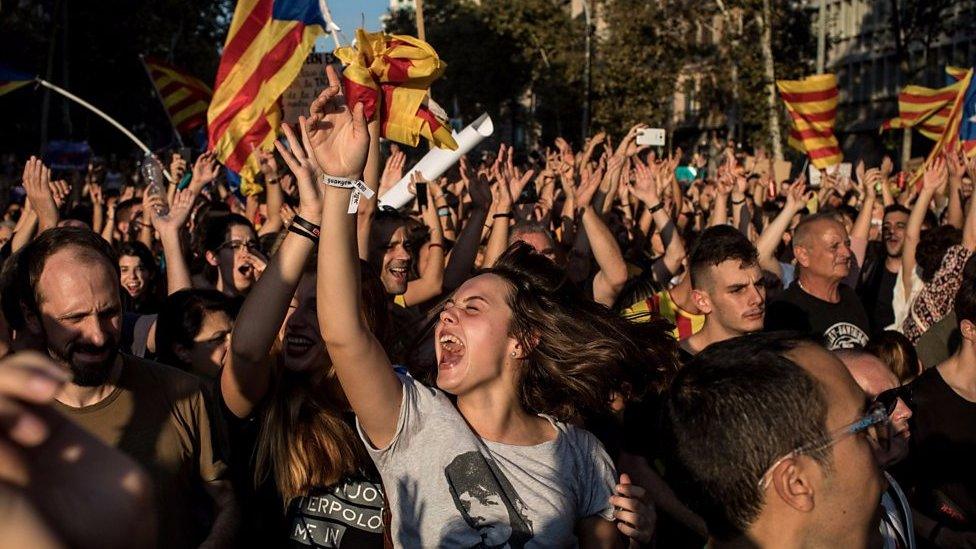
- Published3 October 2017
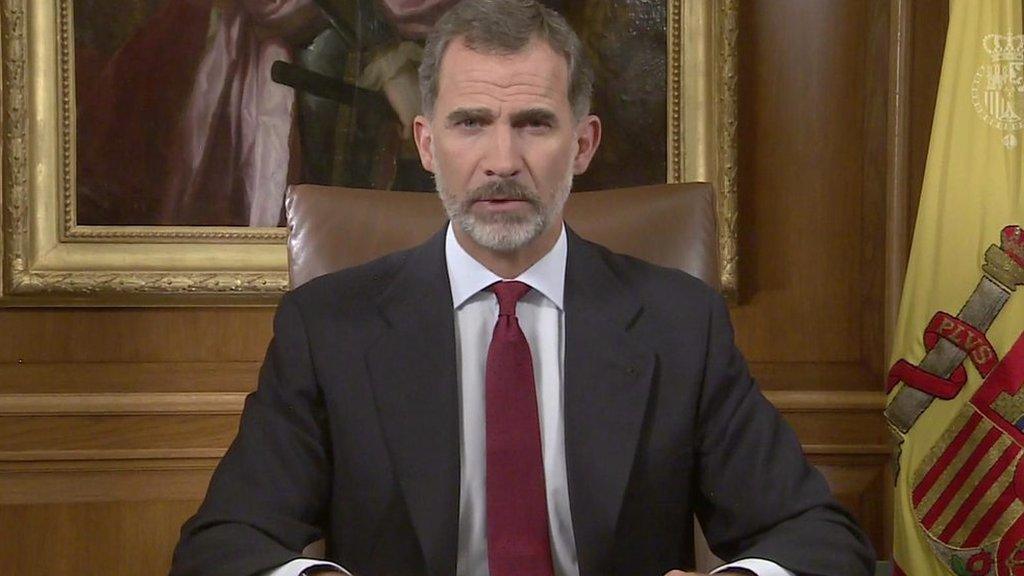
- Published3 October 2017
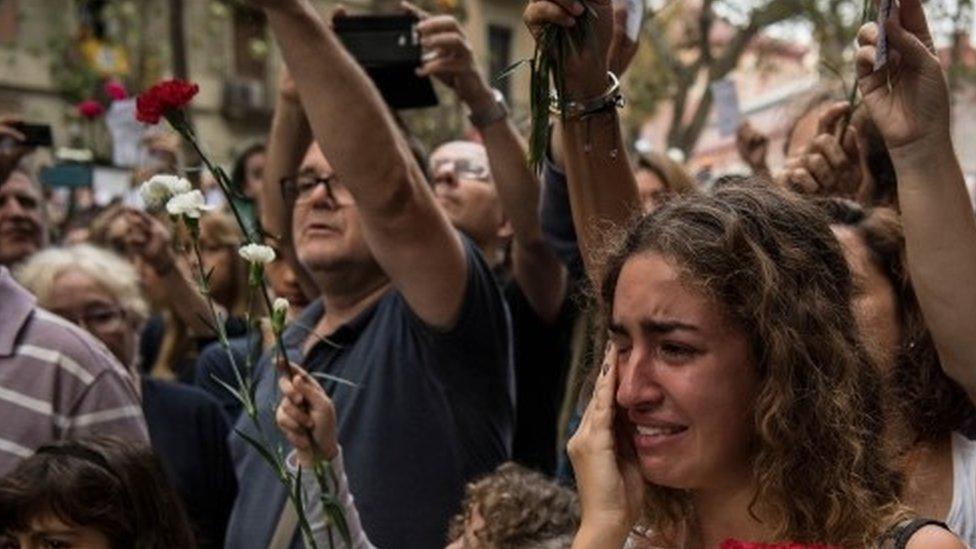
- Published3 October 2017
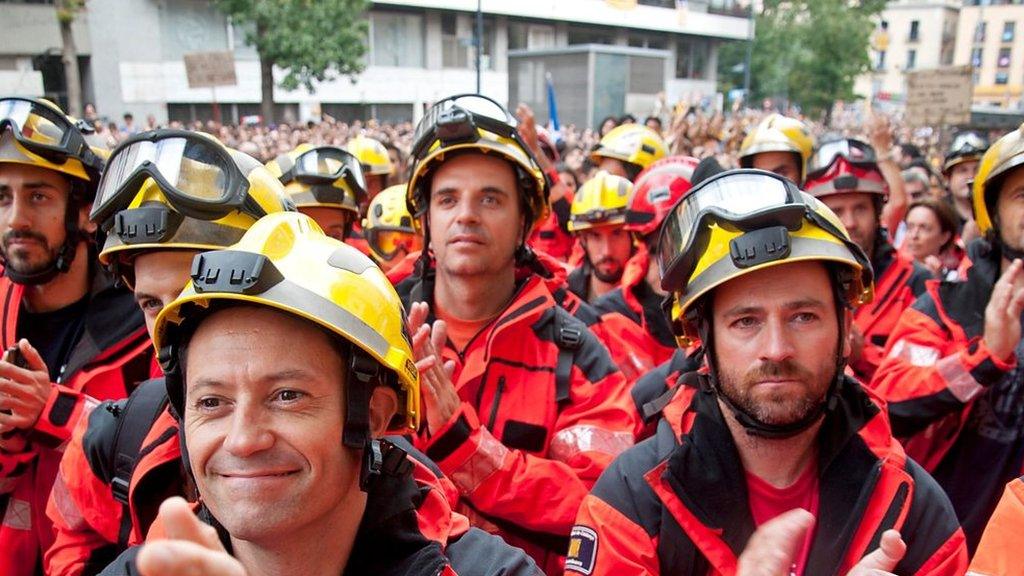
- Published3 October 2017
